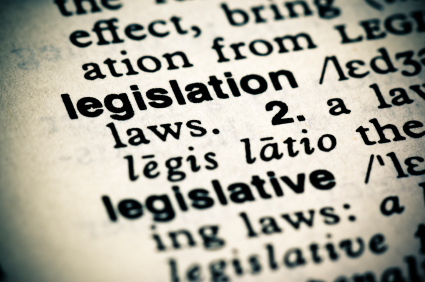Profit-based organisations - legal structure
 Most organisations that operate in the private sector do so to make profits for the owners. The effectiveness of a business will be influenced by the choice of legal structure, which will determine how a business is financed, managed and organised, and its prospects for growth.
Most organisations that operate in the private sector do so to make profits for the owners. The effectiveness of a business will be influenced by the choice of legal structure, which will determine how a business is financed, managed and organised, and its prospects for growth.
Legal structure
When a firm sets up, the basic choice is whether to be an unincorporated or an incorporated business. The main difference is that in an unincorporated firm, the 'owner is the business', and is legally responsible for everything. For incorporated firms, the firm is a legal entity in itself. It has rights and responsibilities, distinct from those of the owners.
Incorporation is like a birth - a legal entity is created with rights, responsibilities and 'legal personality' - just like a newborn baby. The company has a legal personality. If, for instance, a person steals from a company, it is the company itself that prosecutes the offender, not an individual manager.
An important difference between incorporated and unincorporated businesses is that of limited liability. An unincorporated business has unlimited liability. The owner is responsible for all debts of the business and if necessary his/her personal possessions (assets), such as a house, can be seized to pay business debts. An incorporated business is owned by shareholders. Every shareholder (owner) has limited liability. In the event of the business failing, the shareholders can only lose up to the value of their investment. Their liability for debts is therefore limited to the maximum value of the shares they hold. So if a shareholder has $400 of shares in a company, which goes out of business owing large sums of money, the shareholder can only lose a maximum of $400.
Businesses which possess limited liability must say so after their name, e.g. 'ABC Limited.
This acts as a warning to any individual or organisation that does business with the limited company that, on a liquidation, debts may not be paid. A shareholder's personal possessions cannot be sold to pay for these outstanding debts.
There are four main types of business organisation, and these all have their advantages and disadvantages for the business itself, and also for external organisations and individuals with which the firm deals. We look here at common features of these business organisations. However, they may differ from country to country. One useful exercise is to search online to find out more detail about business structures in your country. The common international legal structures are:
Unincorporated organisations
The business and the owner/owners are seen legally as being one and the same. If you sue a sole trader for debt, for example, you sue the individual owner of the business. The owner is entitled to all the profit, but is also personally liable for all the debts. The owner has unlimited liability and all of his assets may be sold to pay any outstanding debts after the business assets have been sold e.g. the owner's house and car could be seized by legal representatives of the creditors. Sole traders and partners have unlimited liability.
Owners pay personal income tax, at whatever rate the government sets. As the owner's income increases the marginal rate of tax, also increases. There may come a time when the percentage rate of income tax, is higher than the corresponding rate of tax paid by a similar company. This may be an incentive to incorporate.
There are two types of unincorporated businesses:
 Sole trader (sole proprietor)
Sole trader (sole proprietor)
Most new small businesses are set up as sole traders.
- This is the simplest legal structure. It is easy and cheap to set up. There are few formalities, although the sole trader may need to apply for licences or to register the name of the business. The income of the business is the sole trader's income and liable for personal tax. Raising finance for future growth of the business is usually more difficult for a sole trader than a company, and potentially more expensive as interest is likely to be higher because of the increased risk. Sole traders will usually need some security to support borrowing, often their house, and the loan potential is limited. They stand to lose everything if the business fails and may become bankrupt. This situation is called unlimited liability. Some businesses, however, stay sole traders for a long time, even when they are large and even international. JCB, the digger firm, operated as a sole proprietorship for many, many years.
- Sole traders deal directly with the national tax authority, and all profits are treated as income, and taxed accordingly. There are no shares or shareholders. It can be hard to raise money through the banks because of the unlimited liability and lack of security. Many sole traders are small businesses that sell services such as taxi drivers, plumbers, decorators and electricians. As the business is the owner, a sole tradership ceases to exist when the owner retires or dies; it lacks legal continuity.

Although a sole proprietorship is owned by a single owner, it may have many employees. Never say in an exam that a sole trader is where the business is owned and run by one person.
Sole traders have no shares or shareholders. Do not call them companies!
Summary
Advantages of a sole trader:
- Cheap and easy to set up with few legal formalities
- The owner receives all the profits
- Decision-making is quick as only one person makes the decisions
- Being 'your own boss' can be motivating (self actualising)
- Privacy and confidentiality as public accounts are not required
- Flexibility and the ability to offer a personal service
Disadvantages:
- Unlimited liability - risks personal assets
- Limited sources of finance
- Limited managerial skills as the owner is responsible for all business functions
- High risks - sole traders have few economies of scale and therefore higher costs. They are vulnerable to competition from larger businesses with lower costs.
- Workload and stress - owners may be 'workaholics' knowing that any profit is down to them
- Lack of legal continuity
- No one to bounce ideas off
Partnership
 A Partnership is owned by two or more people. For most ordinary partnerships, the maximum number of partners is limited by law to twenty, but like many forms of business structure, this varies from country to country.
A Partnership is owned by two or more people. For most ordinary partnerships, the maximum number of partners is limited by law to twenty, but like many forms of business structure, this varies from country to country.
- The ownership, profit and liabilities are shared between partners. There is more work necessary to set up a partnership than a sole tradership. Generally, a legal agreement - the Deed of Partnership - must be drawn up by a lawyer. There is one major problem of a partnership and that is the responsibility carried by partners. Partners are responsible for losses, 'wholly or severally'. If they all can pay, they will share the debt, but if only one has any assets then this partner will pay all. In other words they still have unlimited liability. A whole section of the law covers partnerships, and they can be difficult to set up and run.
- Many professional firms are partnerships. Most firms of lawyers, accountants, vets and architects are partnerships. They have the necessary skill and knowledge to draw up the correct partnership agreement.
- Partnerships have to be re-established if one partner leaves or dies, as this event invalidates the Deed of Partnership.
The owners of sole traders and partnerships run their businesses and make all major decisions. Sole traders and partnerships cannot sell shares in their business to other people. This can be a significant restriction on them raising capital for expansion. In some countries certain occupations, such as doctors and lawyers, are prevented from incorporating, as there may be a conflict of interest between clients and owners. For instance, if doctors are set up as private companies, is the main obligation to make profits for the shareholders or to treat sick patients even if they have no money?
Summary
Advantages of a partnership:
- Greater financial strength than sole proprietorship as there are more investors
- The owners receives a share of all the profits
- Decision-making can be shared between partners who may be specialists, allowing for the division of labour
- No responsibility to shareholders
- Privacy and confidentiality as public accounts are not required
Disadvantages:
- Unlimited liability - risks personal assets
- Limited sources of finance compared to companies
- Decision making may be slower than sole proprietorships, as more owner are involved. This may leads to disagreements and conflicts
- High risks - sole traders have few economies of scale and therefore higher costs. They are vulnerable to competition from larger businesses with lower costs.
- Workload and stress - owners may be 'workaholics' knowing that any profit is down to them
- Lack of legal continuity - if one partner dies or leaves the partnership is legally dissolved as the Deed of Partnership is invalid. Redrawing the Deed is expensive.
- A mistake by one partner has legal and financial consequences for all partners.
Unlimited liability, difficulties in raising finance and taxation issues may make businesses change their legal form to become incorporated.
